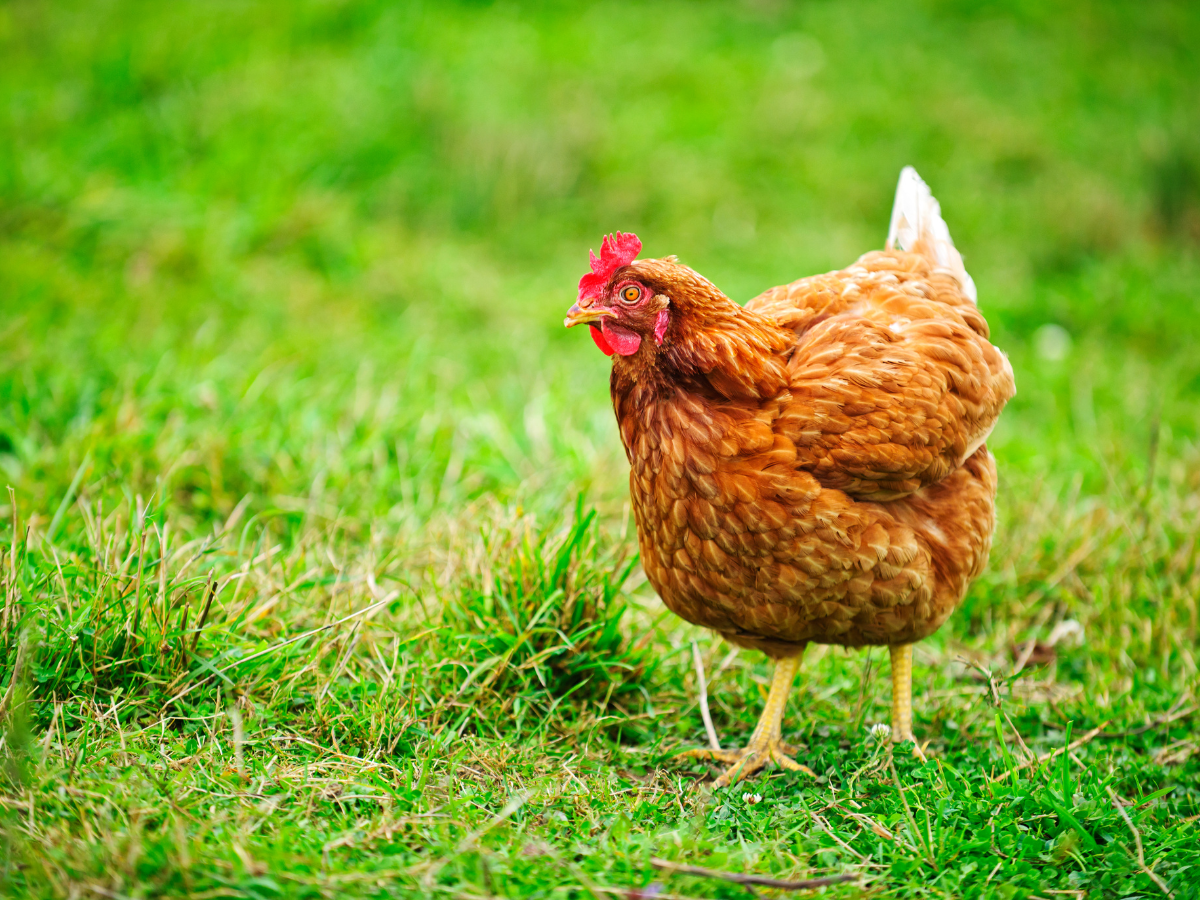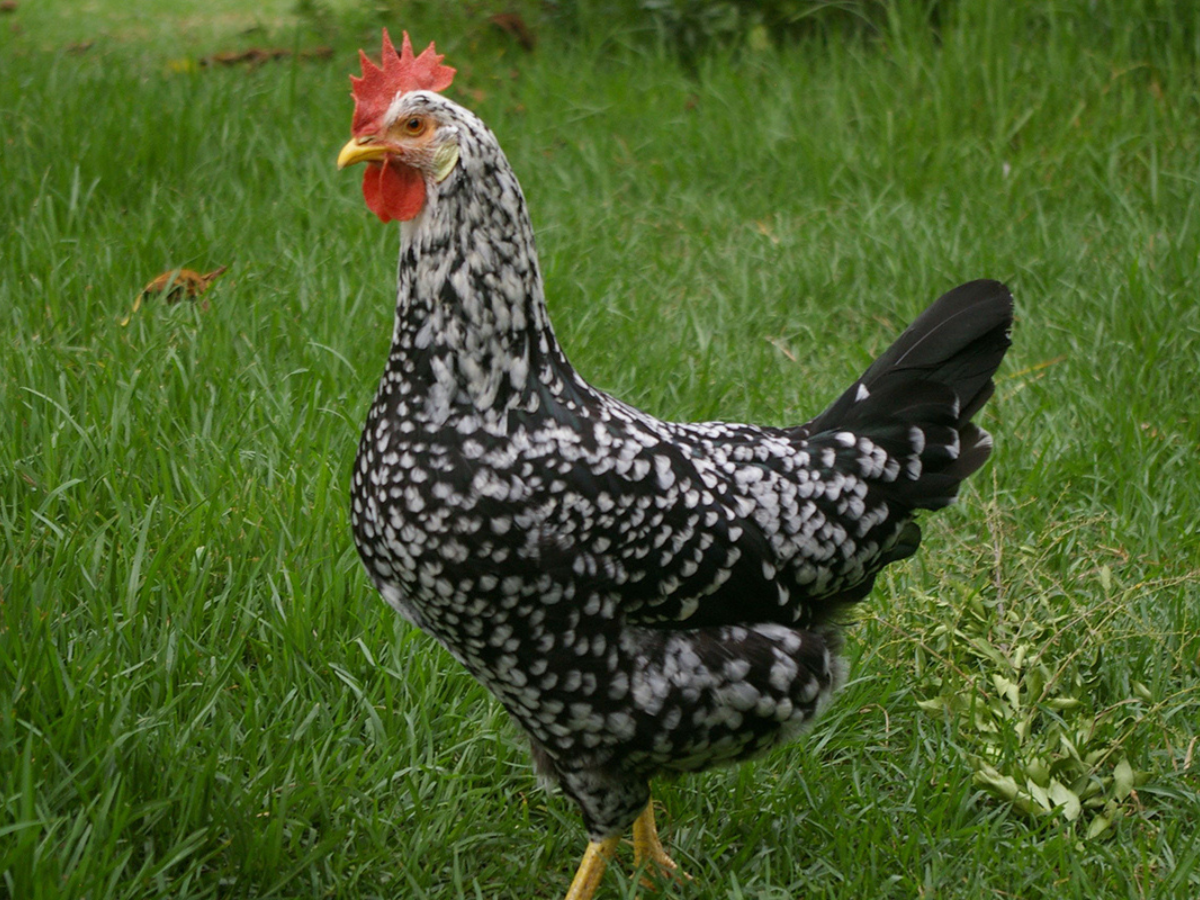Thriving in the Heat: 5 Chicken Breeds for Hot Climates
Keeping chickens in hot climates comes with its own set of challenges, but choosing the right breeds can make a significant difference in the well-being and productivity of your flock. In this blog post, we'll explore some of the best chicken breeds known for their ability to endure and even thrive in high temperatures.
Rhode Island Red: The Heat-Tolerant Classic
Rhode Island Reds are equipped with a single comb, which is a crucial anatomical feature contributing to their heat tolerance. The single comb is less prone to frostbite, making it an advantageous trait in cold climates. However, in hot weather, this single comb plays a different but equally vital role. It aids in effective heat dissipation. Combs act as a cooling mechanism for chickens. The blood vessels in the comb expand, allowing increased blood flow and facilitating heat exchange with the surrounding air. In the case of the Rhode Island Reds, their single comb design ensures efficient heat dissipation, helping them regulate their body temperature even in high-temperature environments. Rhode Island Reds are known for their robust foraging instincts. This characteristic is advantageous in hot climates for several reasons. Their natural inclination to roam and explore encourages them to seek out shaded areas and cooler spots in the environment, allowing them to escape direct sunlight during the hottest parts of the day.

Moreover, their foraging skills contribute to a diverse and balanced diet, promoting overall health. A well-nourished chicken is better equipped to handle heat stress, making Rhode Island Reds resilient and adaptable in hot weather conditions. These chickens are well-suited for free-ranging, which is particularly beneficial in hot climates. Free-ranging allows them to explore a larger area, find shaded spots, and access a variety of natural foods. Unlike confined spaces, free-ranging provides them with the flexibility to regulate their activity levels and seek refuge from the heat when needed.
Leghorn: Efficient Layers in the Heat
Leghorns are celebrated for their exceptional egg-laying abilities, and their prowess extends to their capacity to thrive in hot climates. Several characteristics make Leghorns well-suited for warmer environments, making them a popular choice for backyard flocks, especially in regions with high temperatures.

Leghorns boast sleek, white plumage that serves a dual purpose in hot climates. White feathers have a higher reflective capacity, effectively bouncing off a significant amount of sunlight. This reflective quality helps to prevent the absorption of excess heat, keeping the chickens cooler compared to darker-colored breeds. In regions with scorching temperatures, the ability of Leghorns to efficiently reflect sunlight plays a crucial role in mitigating the heat stress that chickens might otherwise experience. This adaptation is particularly advantageous during the peak hours of sunlight, when temperatures soar.
Leghorns are known for their high energy levels and active nature. This characteristic is beneficial in hot climates for several reasons. Their constant movement encourages air circulation around their bodies, aiding in heat dissipation. Additionally, their active foraging behavior allows them to seek out shaded areas and cooler spots in the environment, demonstrating a natural instinct for heat regulation. The combination of their active lifestyle and adept foraging skills means Leghorns are more likely to navigate their surroundings strategically, avoiding prolonged exposure to direct sunlight during the hottest parts of the day.
Sussex: Heat-Tolerant and Easygoing
Sussex chickens stand out as a versatile and adaptable breed, capable of thriving in various climates, including hot environments. Their suitability for warmer temperatures can be attributed to specific characteristics that contribute to their overall comfort and well-being.

Sussex chickens are known for their calm and docile temperament. This easygoing nature plays a crucial role in their ability to handle heat stress. Stress can exacerbate the impact of high temperatures on chickens, leading to various health issues. Sussex's calm demeanor allows them to better cope with the physiological challenges posed by heat. Low-stress levels also contribute to a more harmonious flock dynamic, reducing the likelihood of aggressive behavior that can escalate during periods of elevated temperatures.
The Sussex breed features loose feathering, which is a key advantage in hot climates. Loose feathers allow for better air circulation around the chicken's body, promoting effective heat dissipation. Unlike densely feathered breeds that might struggle in high temperatures, Sussex chickens can stay cooler due to this natural ventilation. This loose feathering adaptation helps Sussex chickens maintain a more comfortable body temperature, mitigating the potential negative effects of heat stress.
Plymouth Rock: Heat-Friendly Heritage Breed
The black and white-striped plumage of Plymouth Rocks serves a functional purpose in hot climates. The contrasting colors create a pattern that provides some protection from the sun. The black stripes absorb less heat than solid black feathers, preventing excessive heat absorption and aiding in temperature regulation.

This natural adaptation allows Plymouth Rocks to manage their body temperature more effectively, making them better equipped to handle the challenges posed by high temperatures.
Ancona: Heat-Tolerant and Colorful Layers
Anconas feature a unique feather pattern with a mottled appearance, combining white feathers with black or blue spots. This distinctive coloring contributes to their heat tolerance in several ways. The black or blue spots on their plumage help absorb and disperse some of the sunlight, preventing excessive heat absorption. This adaptation allows Anconas to stay more comfortable in high temperatures compared to solid-colored breeds.

Moreover, the mottled pattern creates a visual effect known as countershading. The darker coloration on the upper side of their bodies provides natural shading, reducing the direct impact of sunlight and helping them regulate their body temperature more effectively.
Anconas are known for their active and foraging nature. This behavior is advantageous in hot climates as it encourages movement, which aids in air circulation around their bodies, facilitating heat dissipation. Their natural instinct to forage also means they can actively seek out shaded areas and cooler spots in their environment, allowing them to regulate their temperature based on their needs.
Anconas are recognized for their overall hardiness and resilience. This resilience extends to their ability to withstand the challenges posed by heat stress. Their robust constitution and adaptability make them well-suited for climates with high temperatures, ensuring they can thrive in various conditions.
Tips for Keeping Chickens Cool in Hot Climates
While selecting heat-tolerant breeds is crucial, providing the right care is equally important. Here are some tips to help your chickens stay cool:
1. Shade and Ventilation: Ensure that your coop and run have ample shade and proper ventilation to prevent heat buildup.
2. Hydration is Key: Always provide fresh, cool water for your chickens. Consider adding electrolytes to their water during particularly hot days.
3. Dust Bathing Opportunities: Dust bathing helps chickens regulate their body temperature. Provide areas with dust or dry soil for them to indulge in this natural behavior.
4. Cool Treats: Offer frozen treats like watermelon or ice blocks with fruits to help them cool down.
5. Limit Activity During Peak Heat: Encourage foraging in the cooler parts of the day and limit activities during the hottest times.
By choosing breeds that are well-suited for hot climates and implementing proper care strategies, you can ensure a happy and healthy flock even in the warmest weather. Whether you're a seasoned chickenkeeper or just starting out, these heat-tolerant breeds are excellent choices for your backyard in the sun.
